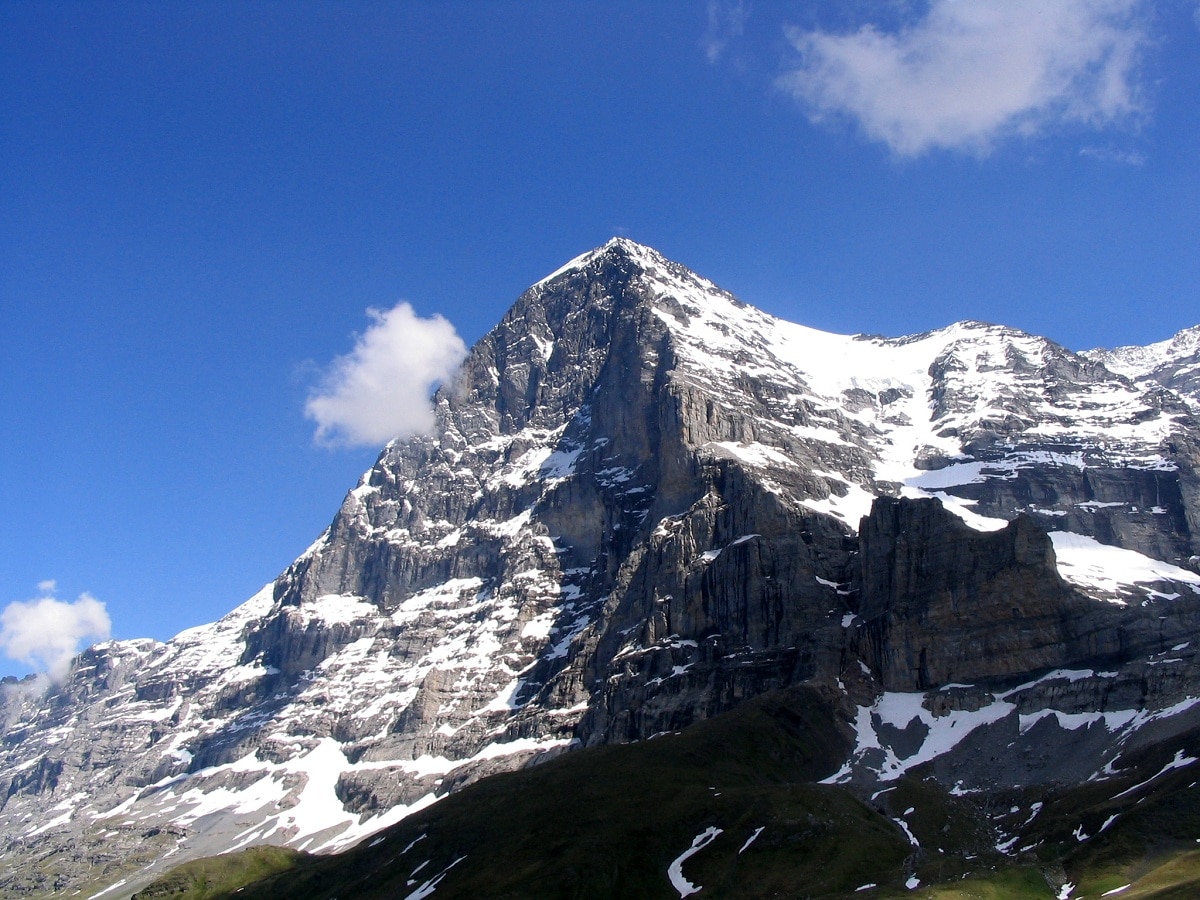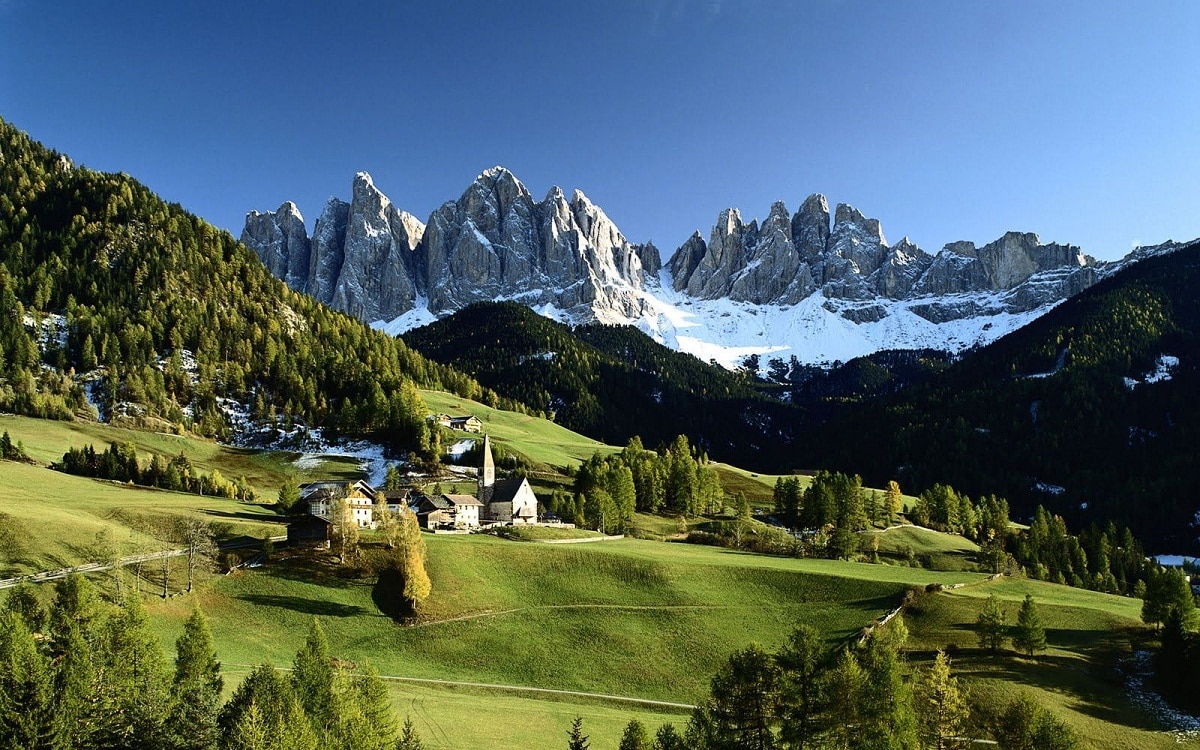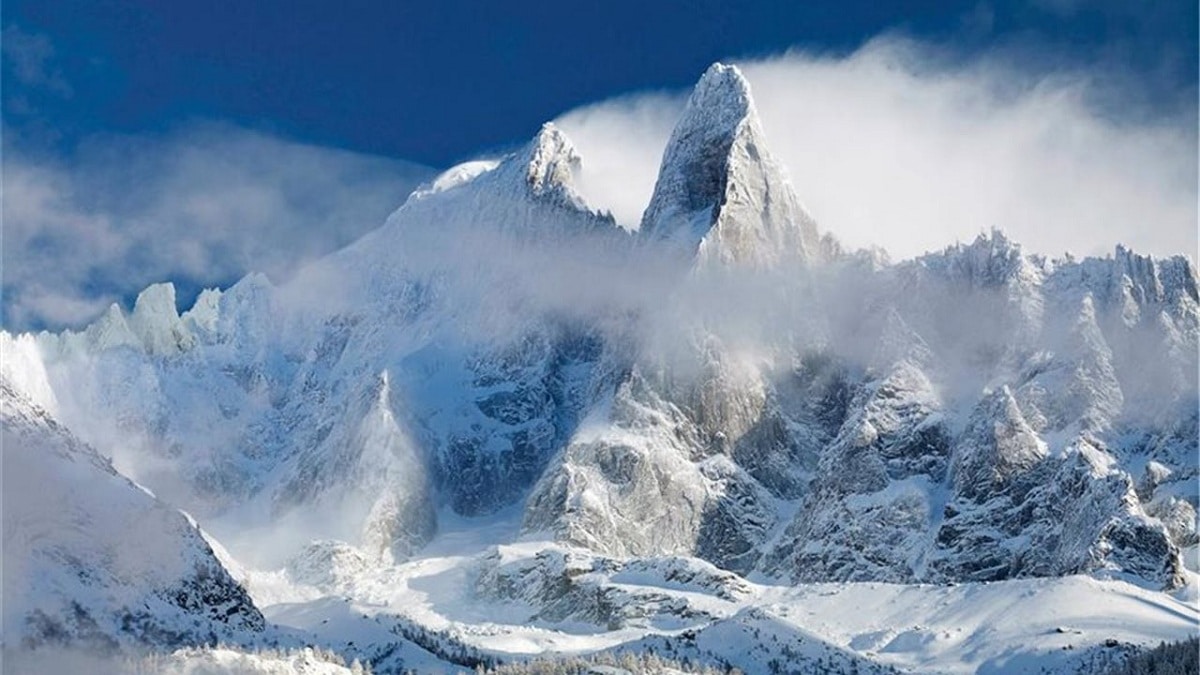
One of the most famous mountain systems in the world, located in Europe, are the Swiss Alps. It is considered the longest mountain range in all of Europe and extends to 8 countries. It passes through Austria, France, Germany, Monaco, Switzerland, Slovenia, Italy and Liechtenstein. These mountains occupy an important place in the geography of these countries, and many cultures originated in this mountain range.
Therefore, we are going to dedicate this article to tell you all the characteristics, origin and geology of the Swiss Alps.
Key features

The mountainous landscape has astonishing beauty and has shaped the culture of many countries. These landscapes appear in many mountains and towns in the region and have become a very popular tourist destination. These areas perform skiing, mountaineering and hiking activities, and receive more than 100 million tourists each year.
The first is geographically located in an arc of more than 800 kilometers in southeastern Europe. It extends from the Mediterranean region to the Adriatic region. It is considered the core of other mountain systems such as the Carpathians and the Apennines. Among all its mountains, we can find the Matterhorn, the Monte Rosa Massif and the Dom. Mont Blanc is its highest peak, and the Matterhorn is probably the most recognized for its shape. All these characteristics make the Swiss Alps considered one of the most famous mountain systems in the world.
The origin of the word Alps is now clear. It can come from Celtic, which means white or tall. The word comes directly from the Latin Alps, passing through French. From the late Paleolithic to the present, the entire area of the Alps has been a place where many ethnic groups settled. In the testament you can see how Christianity has progressed in Europe and several monasteries have been established on the mountain. Some of them are built on higher ground and villages can grow around them.
History tells us that to enter other religious regions and places, the Swiss Alps were considered an insurmountable obstacle. Due to many avalanches and mysterious places, they are also considered dangerous places. Later in the XNUMXth century, technology could allow exploration and research.
Geology of the Swiss Alps

The entire mountain system of the Alps is more than 1.200 kilometers long and is entirely located on the European continent. Some peaks are more than 3.500 meters above sea level and there are more than 1.200 glaciers. The snow level is about 2400 meters, so there are many places for snow tourism. The peaks are permanently covered with snow, forming large glaciers, and the altitude remains above 3.500 meters. The largest glacier is known by the name of Aletsch.
It is considered the nucleus of other mountain systems, such as the pre-Alpine where the Jura mountain block is located. Some parts of the mountain range extend to Hungary, Serbia, Albania, Croatia, Bosnia and Herzegovina, and parts of Montenegro.
From a geological point of view, we can divide this mountain range into a middle section, a western section, and an eastern section. In each of these sections to different subsections or subgroups of mountains. Geologically, we can also distinguish the Southern Swiss Alps, which are separated from other regions by the valleys of Valtelina, Pusteria and Gailtal. To the southwest are the Maritime Alps near the Mediterranean Sea, forming a natural border between France and Italy. In fact, It is well known that Mont Blanc lies between France and Italy and has the longest glacier in France. The western part of this mountain range extends to southwestern Switzerland.
Some of the major rivers in continental Europe, such as the Rhone, the Rhine, the Hainaut and the Delaware, originate in or flow through the Alps and empty into the Black Sea, the Mediterranean and the North Sea.
Origin and formation of the Swiss Alps

Given the size of the range, its formation is part of a fairly complex sequence of geological events. Geological experts believe that it will take almost 100 years to understand the severity of all geological events leading up to the Swiss Alps. If we return it to its origin, we can see that the former was formed due to the collision between the Eurasian plate and the African plate. These two tectonic plates have caused instability in terrain and elevation. The process takes two or more to complete, covering a period of time that lasts millions of years.
It is estimated that all these orogenic movements finally started about 300 million years ago. Tectonic plates began to collide in the late Cretaceous. The collision of these two tectonic plates caused the closure and subduction of most of the terrain corresponding to the Tethys Ocean located between the two plates. Closure and subduction occurred in the Miocene and Oligocene. Scientists have been able to identify different types of rocks belonging to the two plates of the crust, which is why it turned out to be strong enough to lift the ground and form this mountain range. They also managed to find some parts of the ancient seabed belonging to the Tethys ocean.
Flora and fauna
The main objective of tourism is the flora and fauna in addition to the beautiful landscapes. There are natural ecosystems such as steep cliffs, valleys, extensive grasslands, forests, and some steep slopes. The melting of the glaciers has formed some lakes and the surface of the water is calm, which favors the development of flora and fauna.
There is great diversity in these places. Some typical alpine species are mountain goats or wild goats. There are other animals such as antelopes, marmots, snails, moths, and other invertebrates. After wolves, bears, and lynx were actually excluded due to human threats, they are returning to the Swiss Alps. Due to the protection of some natural spaces, it becomes more livable for them.
In the flora we find many grasslands and mountain forests, with many pines, oaks, firs and some wild flowers.
I hope that with this information you can learn more about the Swiss Alps and its characteristics.